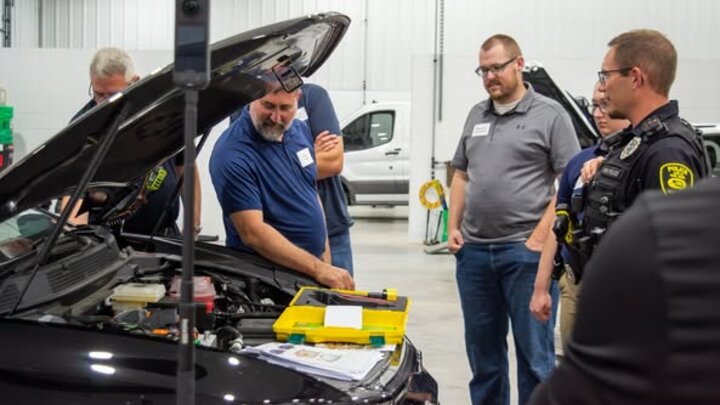On Thursday, September 4th, Nebraska Clean Cities and Communities Coalition hosted the webinar panel discussion, "Get Plugged In: EV Infrastructure Planning for Small Fleets and Multi-Family Housing". During this discussion, we heard from local utilities experts at Lincoln Electric System (LES), Nebraska Public Power District (NPPD), and Omaha Public Power District (OPPD), as well as research experts from the Electric Power Research Institute (EPRI). Below, we will highlight some of the key takeaways.
The webinar began by discussing the forecast of electric vehicles in Nebraska and how it compares to the rest of the nation. Marc Shkolnick of Lincoln Electric System shared that while national adoption rates have recently dipped slightly from 10% to 9% due to factors such as new tariffs, local adoption rates within the Lincoln area have been steadily increasing, with about 3.5% of new vehicles registered in the last quarter being electric. We are also starting to see EV adoption in more of our rural and smaller communities, particularly those along highly traveled roads and interstates.
One of the most considerable hurdles for Nebraskans looking to invest in an EV is the lack of access to charging infrastructure, particularly in rural communities. Chad Pinkelman of the Nebraska Public Power District informed us of the challenges that small-town EV users face related to long driving distances, minimal charging options, and infrastructure pricing concerns. The cost of installing an EV charger varies based on the type of charger. Jennifer Bangert from the Lincoln Electric System highlighted that slower chargers, like a Level 2 charger, can cost anywhere from $500-$5,000, not including installation costs. In contrast, a DC fast charger, which charge a vehicle to 80% in 20-30 minutes.
Although the costs of installing EV infrastructure can be intimidating, federal incentives and tax credits are available to help offset some of the expenses for those looking to adopt EVs. Bridgett Petzoldt from the Omaha Public Power District explained that several federal programs are available, including tax credits for installing EV chargers in rural and underserved areas. The NEVI (National Electric Vehicle Infrastructure) program is also a practical option, as it aims to facilitate the installation of over 500,000 public EV charging stations by 2030.
We then heard from speakers Jennifer Robinson and Katherine Steinken from the Electric Power Research Institute (EPRI). They discussed their "EVs2Scale 2030 Initiative", which focuses on the crucial early engagement with EV charging customers. This initiative works to streamline EV connection processes, particularly for small customers and fleets. Additionally, they have created a web platform titled "GridFAST", which is used to create an easily accessible online library of information and resources for small fleets and multi-family housing owners.
This entire roadmap is a part of a larger project, called the "Charging Infrastructure Service Connection Simplification Resources" (CIISR) project. The overall goal of CIISR is to accelerate connections to EVs and improve transparency among electric utilities and smaller fleets. Further information about the project can be found here:
While Nebraska's transition to adopting electric vehicles tends to be slower than that of coastal states, it is progressing at a steady rate. With continued investments into EV infrastructure, effective policy development, and education from industry professionals, Nebraska communities can continue to expand access to EVs and ensure that property owners and fleet managers have the infrastructure they need to meet future demands.



